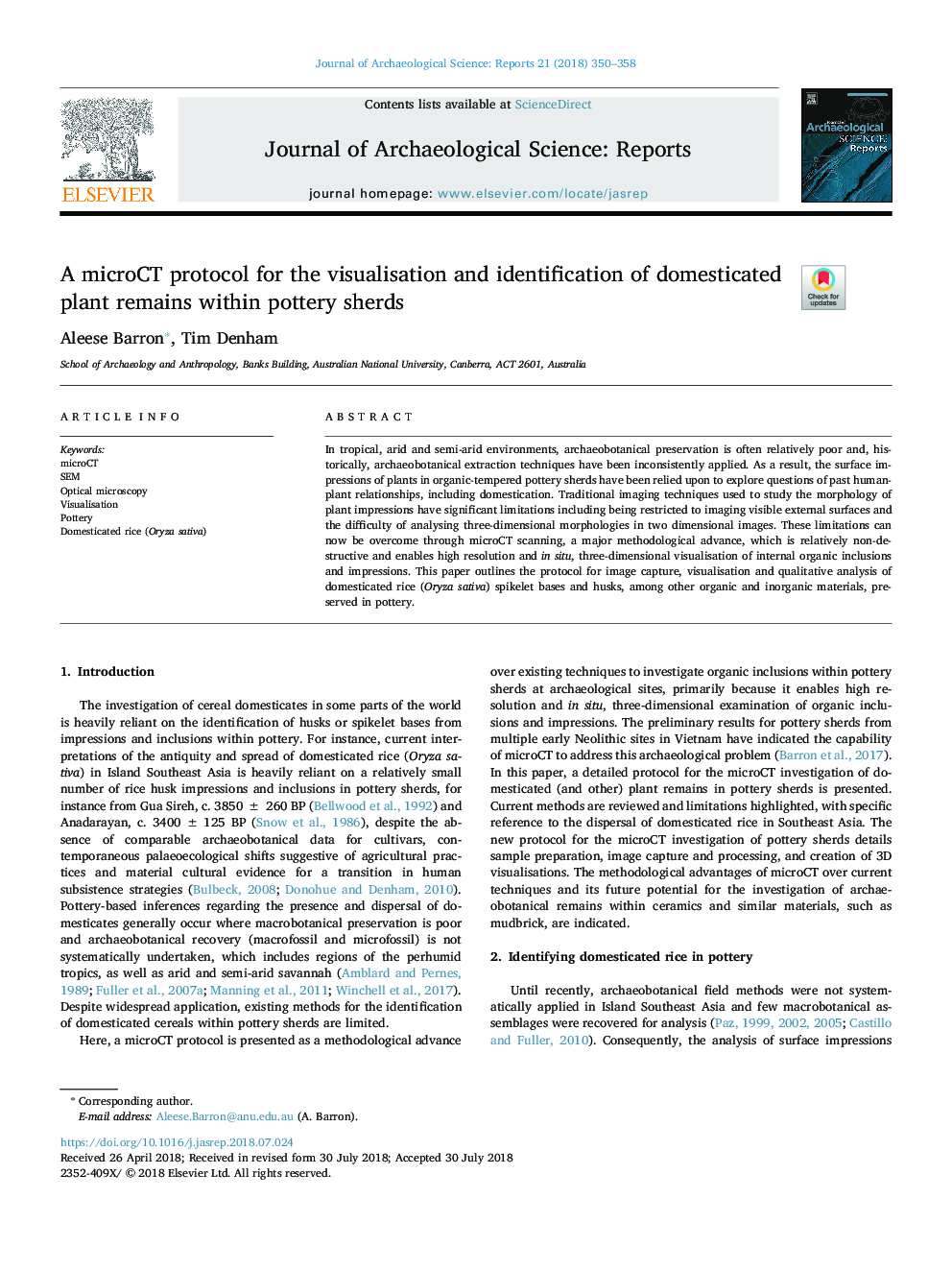| Article ID | Journal | Published Year | Pages | File Type |
|---|---|---|---|---|
| 7444100 | Journal of Archaeological Science: Reports | 2018 | 9 Pages |
Abstract
In tropical, arid and semi-arid environments, archaeobotanical preservation is often relatively poor and, historically, archaeobotanical extraction techniques have been inconsistently applied. As a result, the surface impressions of plants in organic-tempered pottery sherds have been relied upon to explore questions of past human-plant relationships, including domestication. Traditional imaging techniques used to study the morphology of plant impressions have significant limitations including being restricted to imaging visible external surfaces and the difficulty of analysing three-dimensional morphologies in two dimensional images. These limitations can now be overcome through microCT scanning, a major methodological advance, which is relatively non-destructive and enables high resolution and in situ, three-dimensional visualisation of internal organic inclusions and impressions. This paper outlines the protocol for image capture, visualisation and qualitative analysis of domesticated rice (Oryza sativa) spikelet bases and husks, among other organic and inorganic materials, preserved in pottery.
Related Topics
Social Sciences and Humanities
Arts and Humanities
History
Authors
Aleese Barron, Tim Denham,
